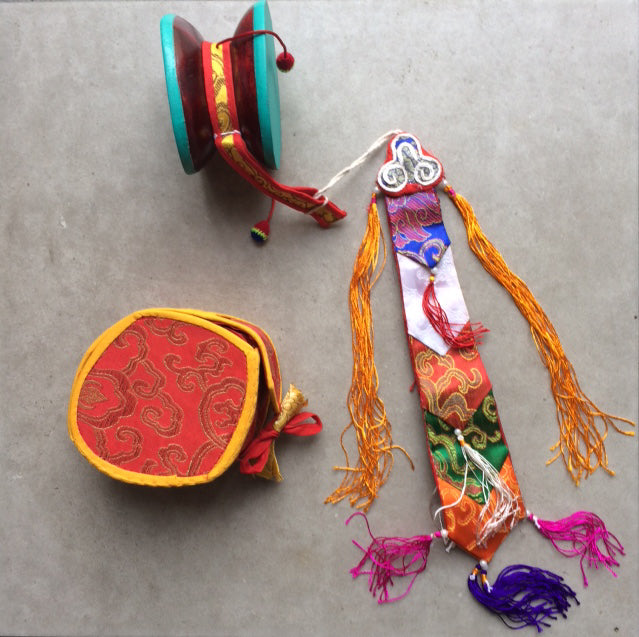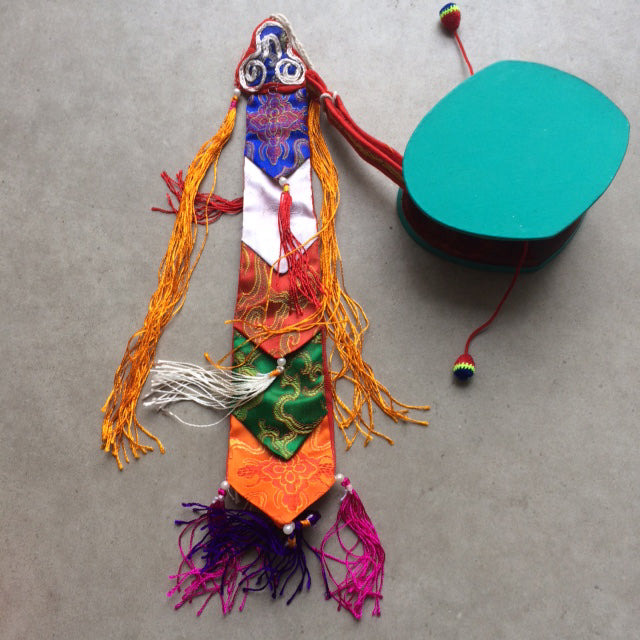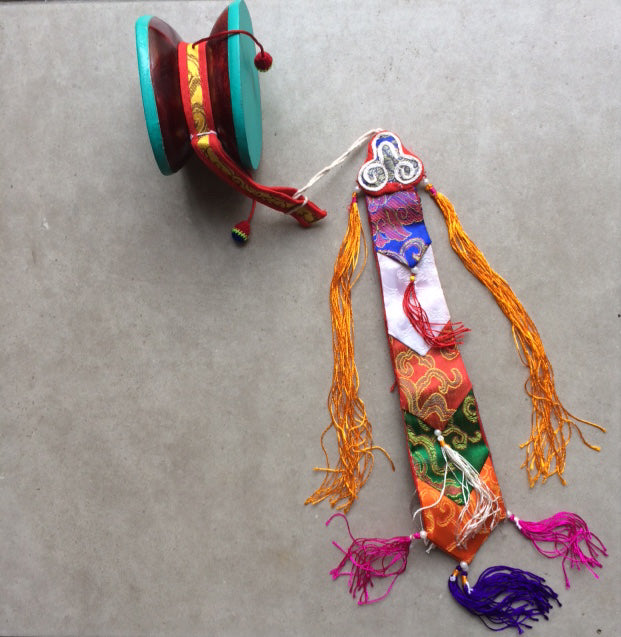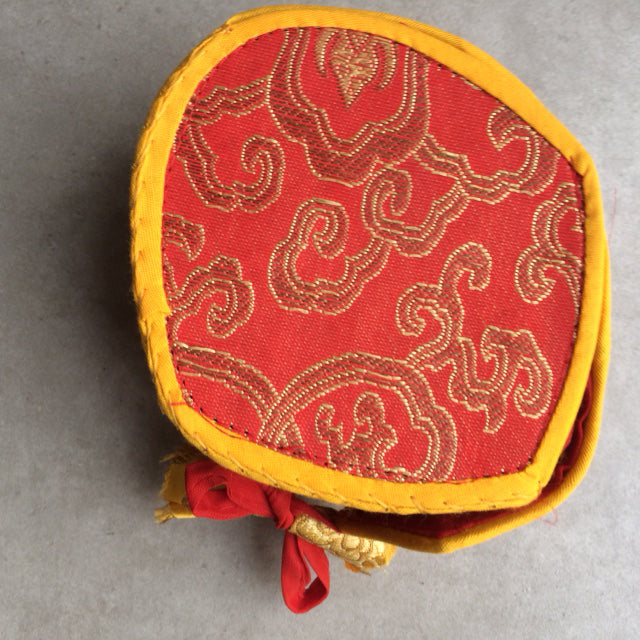Tibetan Damaru or 'begging drum'. Originating from fascinating and mystical rituals, beautifully decorated with colorful tassels and fringes, it produces a perfectly balanced sound. Easy to roll up and store in the silk brocade cover, perfect!
Tibetan Damaru or 'begging drum'. Originating from fascinating and mystical rituals, beautifully decorated with colorful tassels and fringes, it produces a perfectly balanced sound. Easy to roll up and store in the silk brocade cover, perfect!
Couldn't load pickup availability
Size: 13x11x7 cm
Weight: 255 grams
Fascinating and mystical ritual drum, beautifully decorated with colorful tassels and fringes, which produces a perfectly balanced sound. Easy to roll up and store in the provided silk brocade case. Excellent quality ritual drum. The exact pitch and sound of the drum vary depending on humidity, temperature, etc.
The cover color is matched in yellow or red.
Symbolism of the Ritual Drum In Buddhist philosophy, sound is considered a symbol of emptiness, shunyata. The shape of the damaru has its roots in ancient India—where one side of the drum is considered to represent the masculine energy of method and the other represents the feminine energy of wisdom. The two sides of the drum together also represent relative and ultimate Bodhicitta, the spirit of enlightenment.
In the Tantric Buddhist Chod ritual, the drum instructs and reminds us of impermanence as the sound summons female deities called Dakinis. Another interpretation of the sound suggests that the drum represents the powers of the rhythm of the heartbeat.
In Hinduism, particularly among devotees of Shiva, it is believed that Shiva's beating of a ritual drum produced the very first sound (nada). This first sound was made in the void of nothingness. Shiva began his dance of creation to the rhythm of the drum. From his dance, the world was born.
Share










